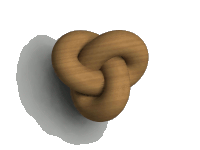Ringworld
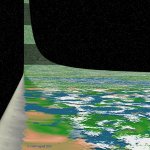
|
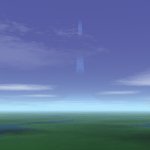
|
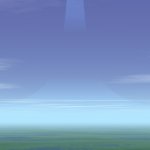
|
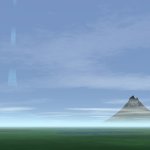
|
The Ringworld is an imaginary structure featured in Larry Niven's 1970 novel of the same name. It consists of a vast loop of matter surrounding a star similar to ours, rotating like a wheel to generate centrifugal gravity on the inner surface. The ring is 95 million miles in radius, putting the inner surface a similar distance from its sun as the Earth is from our sun, and a million miles wide. The inside surface is terraformed, a continuous thousand-mile-high mountain range strung along the edges to keep the air in. Wherever you are on the Ringworld the sun will always be directly overhead; there is no natural day-night cycle. There are therefore 22 vast rectangular sheets called shadow squares strung together to form a secondary ring within the main ring, rotating such that their shadows produce night-time on the ring surface.
The novel concerns the fortunes of an exploration team that goes to investigate the Ringworld, but end up crashing on it when their ship is shot down by the meteor defence system. Although Niven's protagonists are well-drawn and interesting characters, the real star of the novel is the ringworld itself, which Niven describes with awe-inspiring accuracy and detail both in the direct experiences of his characters as well as their discussions and theorising (they are all seasoned, scientifically-literate space travellers).
The Ringworld concept was apparently inspired by the Dyson Sphere (Wikipedia is your friend if you've never heard of these), and has also been used in slightly modified form by Iain M Banks in his Culture novels (orbitals - small rings that orbit stars, giving them proper day-night cycles instead of perpetual noon), and most prominently in the Halo Xbox games.
I would recommend the original novel to anyone; even if you're not usually a fan of SF it's a good read. For a more extensive list of the Ringworld's vital statistics, see this list developed from the Ringworld role-playing game, and a nice selection of Ringworld artwork from various fan sources (including me!) can be found at Known Space: the Future Worlds of Larry Niven.
Rendering this structure presented some problems. Because I built it with the correct relative dimensions and with the camera within a mile of the inner surface, it transpired that the default precision in POV-Ray was insufficient to render the resulting image without artifacts. A lengthy discussion in the POV-Ray forums (see this thread) confirmed this, and none other than David Buck (original author of the raytracer that would one day become POV-Ray) stepped up to deliver a tweaked version with sufficient precision for the task. The results, slightly disappointingly, don't look significantly different from previous images produced with greater spacing between camera and objects. The main problem really is that it's just too big. Believable landscapes are difficult enough to model without making them 3 million times the surface area of the Earth...!

